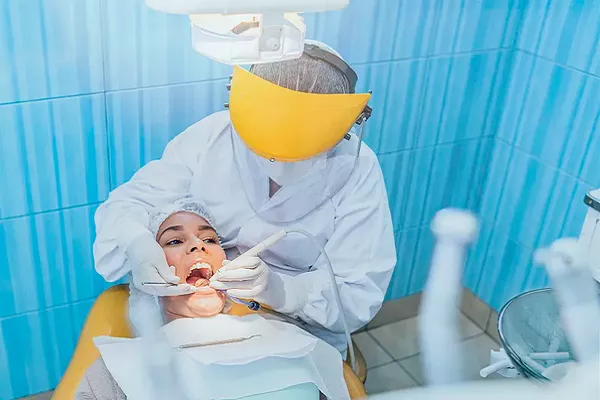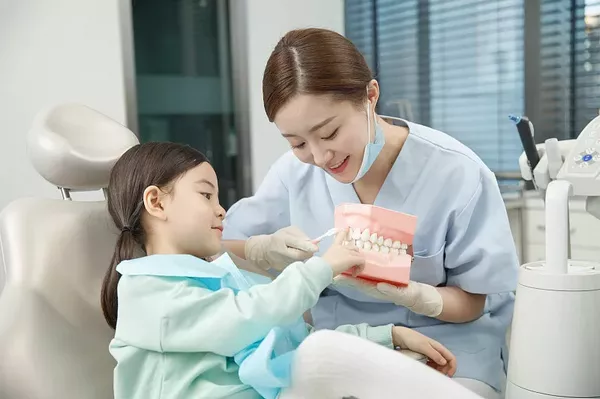Cavity fillings are a common dental procedure used to restore teeth damaged by decay. While the process of getting a filling is relatively straightforward, understanding the healing timeline and what to expect after the procedure is essential for optimal oral health. If you’re wondering how long it takes for a cavity filling to heal and when you can resume your normal activities, this article will provide you with insights into the healing process, recovery tips, and factors that can influence the duration of healing.
The Healing Process After a Cavity Filling
1. Immediate Recovery:
After a cavity filling, it’s normal to experience some residual numbness from the local anesthesia used during the procedure. This numbness typically subsides within a few hours. You may also experience mild discomfort or sensitivity around the treated tooth and surrounding tissues.
2. Sensitivity:
Tooth sensitivity is a common post-filling symptom. You may notice increased sensitivity to hot, cold, sweet, or acidic foods and beverages. This sensitivity is usually temporary and should improve within a few days to a week as your tooth adjusts to the new filling.
3. Healing of Gum Tissues:
If the cavity was deep or near the gumline, your gums may also need some time to heal and adjust. Gums may feel slightly tender or sore around the filled tooth for a short period.
4. Resuming Normal Activities:
Most individuals can resume normal activities immediately after a cavity filling. You can eat, drink, and brush your teeth as usual. However, it’s advisable to avoid extremely hot or cold foods and beverages, as well as sticky or hard foods, until any sensitivity subsides.
Factors Influencing Healing Duration
1. Filling Material:
The type of filling material used can affect the healing process. Composite resin fillings, which match the color of your natural teeth, may require a short period for the material to fully harden and integrate with the tooth.
2. Tooth Sensitivity:
Individuals with pre-existing tooth sensitivity may experience more pronounced sensitivity after a filling. This sensitivity usually subsides as the tooth adjusts to the new filling.
3. Oral Hygiene Practices:
Maintaining good oral hygiene is crucial for proper healing. Continue to brush and floss your teeth regularly, but be gentle around the filled tooth to avoid irritation.
4. Depth of Cavity:
Deeper cavities that require more extensive drilling and filling may result in slightly longer healing times. In such cases, your dentist will provide specific post-procedure care instructions.
5. Personal Healing Response:
Every individual’s body responds differently to dental procedures. Some people may experience a faster healing process, while others may take a bit longer to fully recover.
Tips for a Smooth Recovery
1. Avoid Extreme Temperatures:
To reduce sensitivity, avoid consuming extremely hot or cold foods and beverages immediately after the filling procedure.
2. Opt for Soft Foods:
In the initial days after the filling, opt for softer foods that are gentle on your teeth and gums.
3. Use Desensitizing Toothpaste:
Using a desensitizing toothpaste can help alleviate tooth sensitivity. Consult your dentist for recommendations.
4. Stay Hydrated:
Drinking water helps maintain oral hygiene and prevents dry mouth, which can contribute to discomfort.
5. Follow Post-Procedure Care:
Adhere to any post-procedure care instructions provided by your dentist, including any prescribed medications.
6. Attend Follow-Up Appointments:
If your dentist recommends a follow-up appointment, ensure that you attend it to ensure the filling is healing as expected.
When to Contact Your Dentist
While some sensitivity and discomfort are normal after a cavity filling, there are situations in which you should contact your dentist:
Severe or Prolonged Pain: If you experience severe or prolonged pain that does not improve with time or over-the-counter pain relievers, contact your dentist.
Persistent Sensitivity: If sensitivity continues or worsens after a week, consult your dentist for further evaluation.
Visible Issues: If you notice any issues with the filling, such as damage or loosening, contact your dentist promptly.
Conclusion
The healing timeline after a cavity filling varies from person to person and is influenced by factors such as the type of filling, tooth sensitivity, and individual healing response. While some discomfort and sensitivity are normal, most individuals can resume their normal activities shortly after the procedure. By following proper oral hygiene practices, avoiding extreme temperatures, and adhering to any post-procedure care instructions, you can ensure a smooth and speedy recovery. If you have concerns or experience any unusual symptoms during the healing process, don’t hesitate to contact your dentist for guidance andreassurance. Remember that maintaining regular dental checkups and good oral hygiene practices are essential for preserving the health of your teeth and achieving a confident smile.
Related Topics:
































